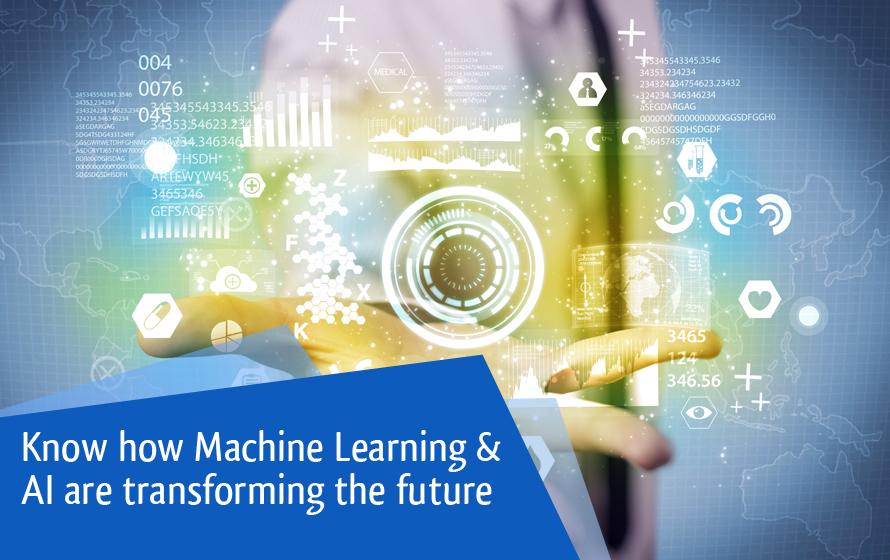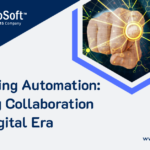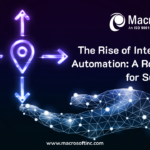

Machine Learning (ML) and Artificial Intelligence (AI) are like two sides of the same coin, with artificial intelligence being the underlying technology driving machine learning. Machine learning delivers a huge amount of data, which can be processed using big data analytics and appropriate predictions can be derived upon using AI technology. This is a next step towards transforming the future as human intervention is no longer a necessity. It is possible to setup an error-proof system with this sort of technology, ensuring greater efficiency, productivity and high levels of accuracy.
Traditional legacy IT systems aren’t flexible enough to quickly scale with the ever changing digital economy. Need for greater efficiency and faster decision-making are driving enterprises to bank on modern technologies leveraging a combination of big data analytics, artificial intelligence and mechanical automation. Machine learning and AI form an inevitable force driving innovation across information technology, effectively serving three specific segments:
- Customer Service and Retention Management – Bots also known as web robots have gone a long way in bringing about greater customer satisfaction. These automated applications perform highly repetitive tasks having the ability to process natural language like a chatterbot program simulating human talk. Bots are currently being used in automatic railway enquiry, banking services, hotel reservations, shopping guides or even scheduling appointments. Such services heighten customer experience resulting in loyalty and most of all retaining the customer base.
- Business Operations and Process Management – Automation alone can greatly improve the efficiency of business processes and workflows. Redundant processes that involves unnecessary human intervention are taken care off during automation reducing operational overheads. This when combined with AI enables organizations improve operational snags with real-time analytics and extended intelligence being retrofitted onto the system. AI makes sense of the vast volume of redundant data by forecasting useful statics that helps plug process inefficiencies. Larger organizations are focusing their research in AI to reduce maintenance costs by anticipating breakdowns and operational failures.
- Cyber Security and Risk Management – Ever increasing cyber risks have to a great extent propelled AI research. AI’s ability to quickly track patterns and deviations in vast amounts of data gives it a sort of sixth sense in tracking potential threats. With machine learning around the corner, threats can be continuously monitored in real-time averting any security breaches. This system is already being used in banks to prevent unauthorized access of user credentials and in the IT sector safeguarding business critical data from networking threats and hacking.
One obvious question that arises is – are we losing control with AI and machine learning. As always, any new technology comes with pros and cons, as long as they are deployed within the business framework. Same holds well in case of AI and machine learning, with AI suggesting on how to improve operations and mechanical systems learning to generate their own algorithms. In spite of all this the human intervention will play a judicious role in deciding whether to implement such recommendations or forgo it. Take for example, IBM’s supercomputer Watson that’s predicting patient’s condition with a reasonably good accuracy by way of continuous learning. Similarly, IT barons like Amazon, Google, Flickr and Netflix are changing their digital business models by incorporating advanced automation and AI techniques.
We are yet to witness a mechanical revolution powered by AI taking over the modern era. Advanced AI technologies coupled with robotics will find better ways of delivering businesses across the globe with least human intervention. Business organizations can pin their hope on future machine learning models to deliver a shared architecture across businesses. As of now we have only explored the tip of the ice berg with more to emerge. Let’s hope AI will pave the path for a high-tech automated future.
By Ronald Mueller | November 14th, 2017 | Process Automation
Recent Blogs


Humanizing Automation: Fostering Collaboration in the Digital Era
Read Blog

Advantages of Technology and IT Companies Partnering with Staffing Firms Offering Visa Sponsorship
Read Blog

CCM in the Cloud: The Advantages of Cloud-Based Customer Communication Management
Read Blog


 Home
Home Services
Services




































